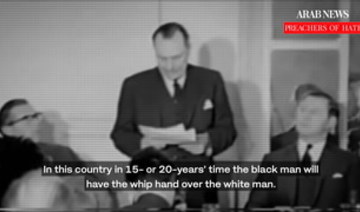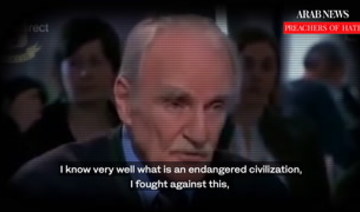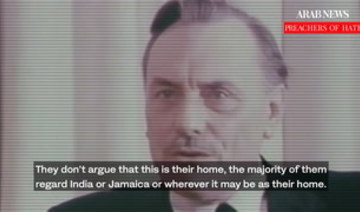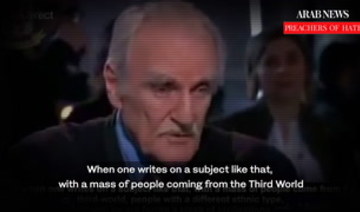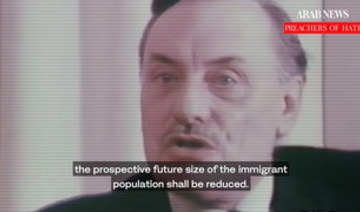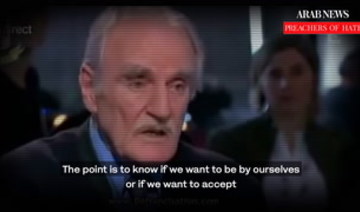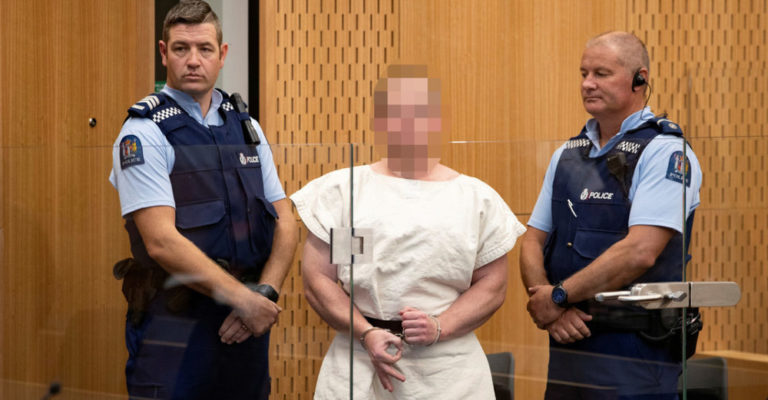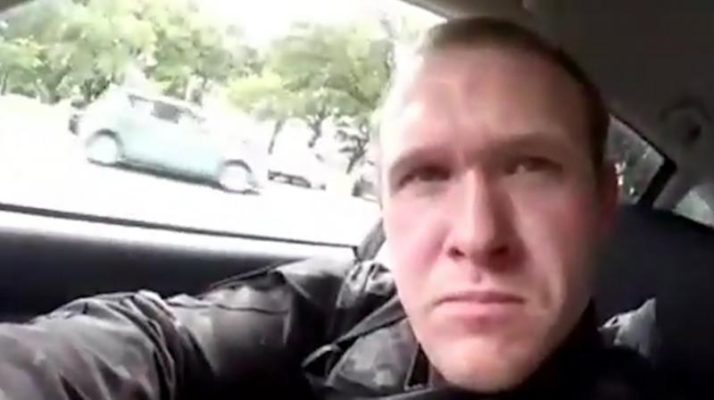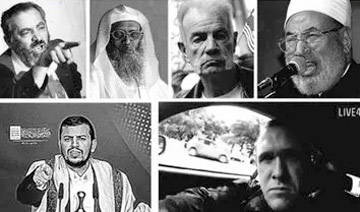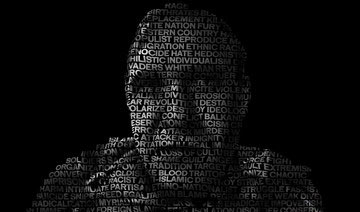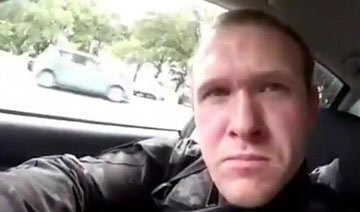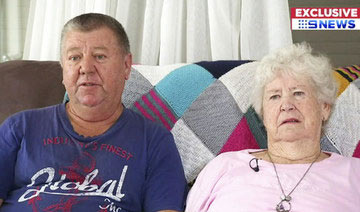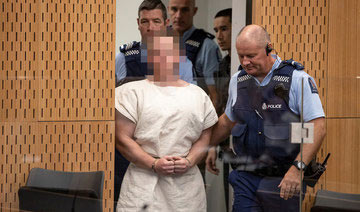Brenton Tarrant
Nationality:
Australian
Place of Residence:
Dunedin, New Zealand; originally from Grafton, Australia
Occupation:
Gym trainer/Bodybuilder
Legal Status:
Pleaded guilty to 51 charges of murder, 40 further charges of attempted murder and another of engaging in a terrorist act
Medium:
Used social media to livestream his attack, and disseminate his thoughts and manifesto
Bio
Before he livestreamed the massacre of 50 Muslim worshippers at two mosques in Christchurch, New Zealand, the suspect, Brenton Harrison Tarrant, was unknown to the world.
Growing up in Grafton, on the north coast of New South Wales, Australia, Tarrant was described as an awkward and shy young man who was uncomfortable around girls.
“He spent most of his time on computers, learning the ins-and-outs of computers, and playing games on computers,” his 81-year-old grandmother, Marie Fitzgerald, told Australian TV news. “I don’t think girlfriends were on the agenda — he said getting married was too hard.”
Tarrant worked as a gym trainer at the Big River Squash and Fitness Center in Grafton. According to CNN, he was described as “normal as one person is to the next” by his former employer, who said Tarrant “never showed any extremist views or crazy behavior.”
Before the Christchurch shootings earned Tarrant instant notoriety, with his 87-page “manifesto” being circulated on white supremacist sites around the world, there were no signs pointing to his links to the movement.
However, from the manifesto’s title, “The Great Replacement,” it is clear that Tarrant drew inspiration from the controversial far-right French thinker Renaud Camus, author of the 2012 book “Le Grand Remplacement.” (Camus has condemned the New Zealand attacks and tried to distance himself from Tarrant’s rhetoric, but his nationalistic, anti-immigrant ideas have earned him a following.)
Camus argues that the white Catholic French population, and the white Christian European population at large, is being systematically replaced by non-European people, mainly Arabs and Berbers from the Middle East, North Africa and sub-Saharan Africa.
Controversial, anti-immigration French writer Jean Raspail and nationalistic British politician Enoch Powell are hailed by Camus as modern-day “prophets.”
Raspail’s novel “The Camp of the Saints,” which depicts the destruction of Western white civilization through mass Third World immigration, was denounced as racist and xenophobic.
Powell’s rhetoric also demonized immigrants. In his infamous 1968 “Rivers of Blood” speech in Birmingham, which led to his sacking from the Conservative Party, the MP said: “In this country in 15 or 20 years’ time, the black man will have the whip hand over the white man.”
While Powell and Raspail are not directly referenced in Tarrant’s manifesto, his anti-immigrant ideology is said to have been heavily influenced by their rhetoric.
Tarrant describes his own views as “dramatically” changing between the beginning of April and end of May 2017.
“In this time period a series of events broke down my own reserves, my reservations, my cynicism and revealed the truth of the West’s current situation,” he wrote, adding that “these events turned my thoughts from pursuing a democratic, political solution and finally caused the revelation of the truth, that a violent, revolutionary solution is the only possible solution to our current crisis.”
During this time, Tarrant was traveling through France, Spain and Portugal when an Uzbek man hijacked a lorry in Stockholm and drove into a crowd, killing five people. Tarrant described the incident as his turning point. “It was another terror attack in the seemingly never-ending attacks that had been occurring on a regular basis throughout my adult life.”
He then began to plot his attacks, the inspiration for which he explained in his manifesto. While much of it reads as a rambling Q&A with himself, it offers an insight into the hateful ideology that gripped Tarrant’s mind.
Ideas
On immigration
“We are experiencing an invasion on a level never seen before in history. Millions of people pouring across our borders, legally. Invited by the state and corporate entities to replace the white people who have failed to reproduce, failed to create the cheap labor, new consumers and tax base that the corporations and states need to thrive.”
“Mass immigration will disenfranchise us, subvert our nations, destroy our communities, destroy our ethnic binds, destroy our cultures, destroy our peoples.”
“The invaders must be removed from European soil, regardless from where they came or when they came. Roma, African, Indian, Turkish, Semitic or other. If they are not of our people, but live in our lands, they must be removed.”
“The enemies of our children are being born in our lands right now, even as you read this. These same children will one day become teens, then adults, voting against the wishes of our people, practicing the cultural and religious practices of the invaders, taking our people’s lands, work, houses and even attacking and killing our children.”
On diversity
“Diversity is not a strength. Unity, purpose, trust, traditions, nationalism and racial nationalism is what provides strength. Everything else is just a catchphrase.”
On democracy
“Democracy is mob rule, and the mob itself is ruled by our own enemies. The global and corporate ran press controls them, the education system (long since fallen to the long march through the institutions committed by the Marxists) controls them, the state (long since heavily lost to its corporate backers) controls them and the anti-white media machine controls them.”
On Muslims
“A Muslim man or woman living in their homelands? No. A Muslim man or woman choosing to invade our lands, live on our soil and replace our people? (sic) Yes, I dislike them. The only Muslim I truly hate is the convert, those from our own people that turn their backs on their heritage, turn their backs on their cultures, turn their back on their traditions and became blood traitors to their own race. These I hate.”
On Turks
“If you attempt to live in European lands, anywhere west of the Bosphorus. We will kill you and drive you roaches from our lands. We are coming for Constantinople and we will destroy every mosque and minaret in the city. The Hagia Sophia will be free of minarets, and Constantinople will be rightfully Christian-owned once more.”
On US President Donald Trump
“As a symbol of renewed white identity and common purpose? Sure. As a policymaker and leader? Dear God, no.”
On German Chancellor Angela Merkel
“Merkel, the mother of all things anti-white and anti-Germanic, is top of the list. Few have done more to damage and racially cleanse Europe of its people.”
On Turkish President Recep Tayyip Erdogan
“Erdogan, the leader of one of the oldest enemies of our people, and the leader of the largest Islamic group within Europe. This warlord must bleed his last, whilst he visits his ethnic soldiers currently occupying Europe.”
On London Mayor Sadiq Khan
“Sadiq Khan, the current mayor of London at the time of writing, an open sign of the disenfranchisement and ethnic replacement of the British people in the British Isles. This Pakistani Muslim invader now sits as representative for the people of London. Londinium, the very heart of the British Isles. What better sign of the white rebirth than the removal of this invader?”
Conclusion
What turned Tarrant from a shy, awkward teenager into a hateful, armed white supremacist now standing trial for the massacre of 50 people as they prayed in two mosques in Christchurch? His own manifesto suggests he was influenced by the European far right and the anti-immigrant ideas of Renaud Camus, Jean Raspail and Enoch Powell.
Analysis
- New Zealand mosque attacks highlight the growing threat of white supremacists
- Like other shooters, he was inspired by anti-immigrant rhetoric and fueled by social media
Before the deadly mass shooting at two mosques in Christchurch, Brenton Tarrant posted a link to a hate-filled manifesto on numerous online platforms that provides an insight into the far-right ideology that influenced him.
The rambling document — filled with anti-immigrant and anti-Muslim rhetoric — is written in the form of a self-styled Q&A, in which he claims to represent “millions of European and other ethno-nationalist peoples that wish to live in peace among their own people.”
Tarrant, a 28-year-old Australian, is thought to have become consumed by anger after a string of terror attacks in Europe in 2016 and 2017, and his manifesto refers to the death of 11-year-old Ebba Akerlund, one of five victims killed in a 2017 terror attack in Stockholm.
Experts have warned the deadly mass shooting bears all the hallmarks of a growing number of attacks led by white supremacists drawn to the ideas of Europe’s anti-immigrant, ultra-right-wing extremists.
Aurelien Mondon, a lecturer at the University of Bath in the UK and an expert on far-right extremism, said the Christchurch attack is a stark example of a growing movement emerging from a global network of white supremacy groups sharing their extreme views on the murky — and often uncensored —web.
“I would describe him (Tarrant) as a white supremacist terrorist. The term ‘lone wolf’ is problematic as it suggests that the attack was a freak accident. It individualizes it, while, in fact, the ideology underpinning it has deep international roots.”
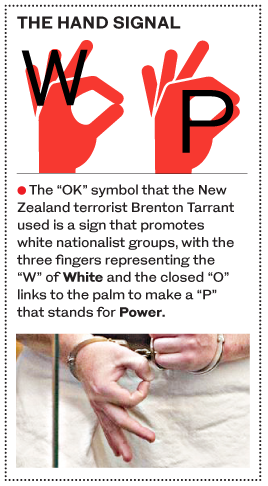
The attack was the “logical deadly conclusion of years of the normalization of Islamophobia and racism, and mainstreaming and hyping of the far right,” Mondon told Arab News “However, it is also part of a movement that has been allowed to spread thanks to the Internet and developed loose international connections more easily this way.”
A spokesperson for the Anti-Defamation League told Arab News that this “latest white supremacist violence underscores the fact that white supremacy is a global threat whose ideology manifests around the world and results in acts of violence.”
It also highlighted extremists’ use of social media. “For modern violent extremists and terrorists, preparing social media seems to be as critical as preparing their guns. Tarrant’s attacks seem to be designed to leverage social media, to attract maximum attention to the massacre and his beliefs.”
The New Zealand attack on March 15 that claimed 50 lives appears to be the latest global terror incident in the past decade linked to white supremacists: In Norway, where Anders Breivik’s July 2011 attacks left 77 dead; in Canada, where Alexandre Bissonnette shot six people during prayers at a mosque in Quebec City in 2017; and in the UK, where Darren Osborne killed one and injured 12 others when he drove a van into worshippers outside a mosque in the London’s Finsbury Park in 2017.
In each instance, the shooter acted in isolation but was heavily influenced by social media and had communicated with other white supremacists or shared their ideology online. The massacre in New Zealand bore the same chilling pattern.
In his 16,500-word manifesto, Tarrant praises Breivik, Osborne and Dylann Storm Roof, convicted for the deadly 2015 mass shooting in a Charleston church in the US.
“The manifesto did not contain anything truly original, and instead the terrorist drew his ideas from a wide constellation of far-right thinkers, from the crudest racists to the more cultural racists,” said Mondon. “Some of his ideas remain marginal and widely denounced in most societies, but others, based on more subtle forms of racism, have gained ground in mainstream discourse over the past 20 years and are now fairly common in the mainstream media and politics.”
A notable detail of Tarrant’s manifesto is the title itself: “The Great Replacement,” a reference to the title of a 2012 book by right-wing French polemicist Renaud Camus, “Le Grand Remplacement,” in which the author shares his theory that Europe’s white majority is being systematically replaced with North African and sub-Saharan African migrants, many of whom are Muslim, through mass migration and demographic growth.
It associates the presence of Muslims in France with potential danger and the destruction of French culture and civilization. In an epigraph to “Le Grand Remplacement,” Camus cites two modern-day figures as “prophets”: Enoch Powell, the anti-immigrant English politician, who in 1968 famously envisioned rivers of blood in Britain brought on by immigration; and the French author Jean Raspail, whose 1973 novel “The Camp of the Saints” became a beacon for far-right figures.
In Tarrant’s manifesto, the ideas of Camus figure prominently. Tarrant cites watching “invaders” at a shopping mall during a visit to an eastern French town as the moment when he realized he would resort to violence.
As Mondon points out: “This demonstrates that the Christchurch terrorist attack was not an isolated act, but rather the logical conclusion of the far-right ideology gaining ground across the West.”
The Southern Poverty Law Center, which monitors extremism in the US, said last year that the number of hate groups is growing and now stands at 1,020, a 30 percent jump from 2014. Most espouse some form of white supremacist ideology, it said.
“They are a clear threat and have been for a long time, although this has been ignored by much of the mainstream press,” said Mondon. “However, it is important to look at the roots of the issue, rather than only at its most extreme expression. We need to stop giving credence to the free speech myth, which has become a very powerful weapon of the far right.
“They are not defenders of free speech and, in fact, are very much against other views being expressed. Furthermore, they have had far more platforms to spew their hatred than their opponents.We need to stop platforming them and instead show them for what they are, the defenders of a racist, unequal and authoritarian ideology.”
Katharine Gelber, professor of politics and public policy at the University of Queensland, said she would describe the New Zealand shooter as a “right-wing extremist.”
“I think it is important to note ‘right-wing’ because he makes it clear he targeted a marginalized and vulnerable group, which is subjected to disparagement in public discourse.”
Gelber said we live in an era of in global politics where right-wing ideas are in the ascendancy. “We are not yet at a stage where they are mainstream, but there has been a combination of governments and political leaders using refugees and asylum seekers, and Muslims, as scapegoats, and subjecting them to the kinds of discourse that marginalizes and excludes them, for well over a decade now.
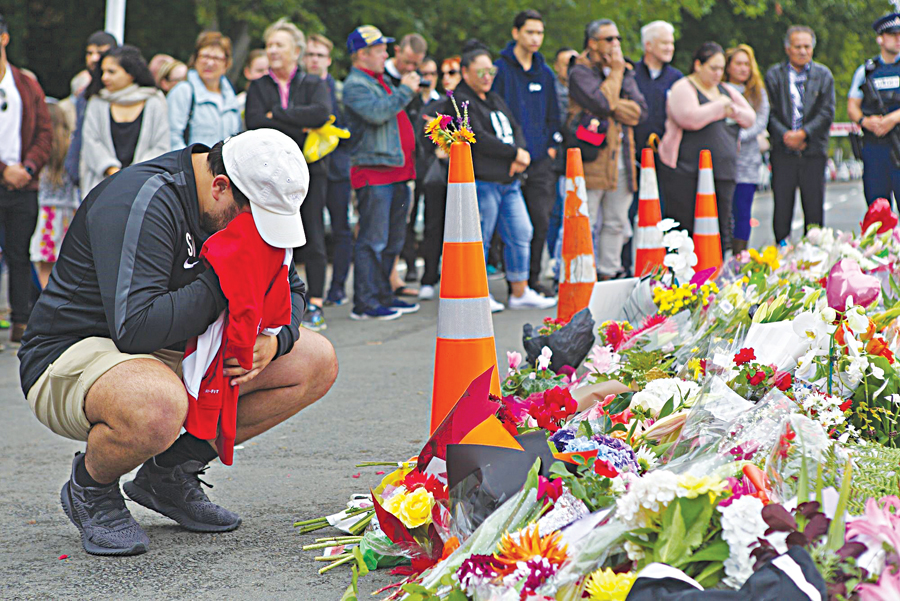
“Combined with this is the rise of political leaders who actively use this kind of discourse and this has emboldened the right wing to step up their campaign against the social gains of previous decades.”
Farhad Khosrokhavar, head of research at the Paris-based School of Advanced Studies in the Social Sciences, told Arab News that supremacists feed off the narrative of their enemies. “Jihadist attacks in Europe are grist to the mill of white supremacism, part of public opinion becoming convinced that governments are not able to fight efficiently jihadism in Europe.”
Supremacists and jihadists have much in common, said Khosrokhavar. “The supremacist hates the Muslim among others, while the jihadist hates the non-Muslim among others. The supremacist believes that violence is the main and almost exclusive way to deal with the ‘enemy,’ such as Muslims, whereas the jihadist believes that it is only through jihad (violent, holy war) that he can confront the ‘enemies.’”
For Gelber, there are numerous ways to prevent extremists such as Tarrant. First, online platforms have a responsibility to react quickly to material that represents a clear threat, she said. Governments also should prosecute extremists who break the law.
But in the end an effective response relies largely on changed behavior. “People need to start taking responsibility for their words online, just as they do for their words offline,” she said. “But it is difficult to do that in a society that is promoting and enabling bullying and hate speech.”



